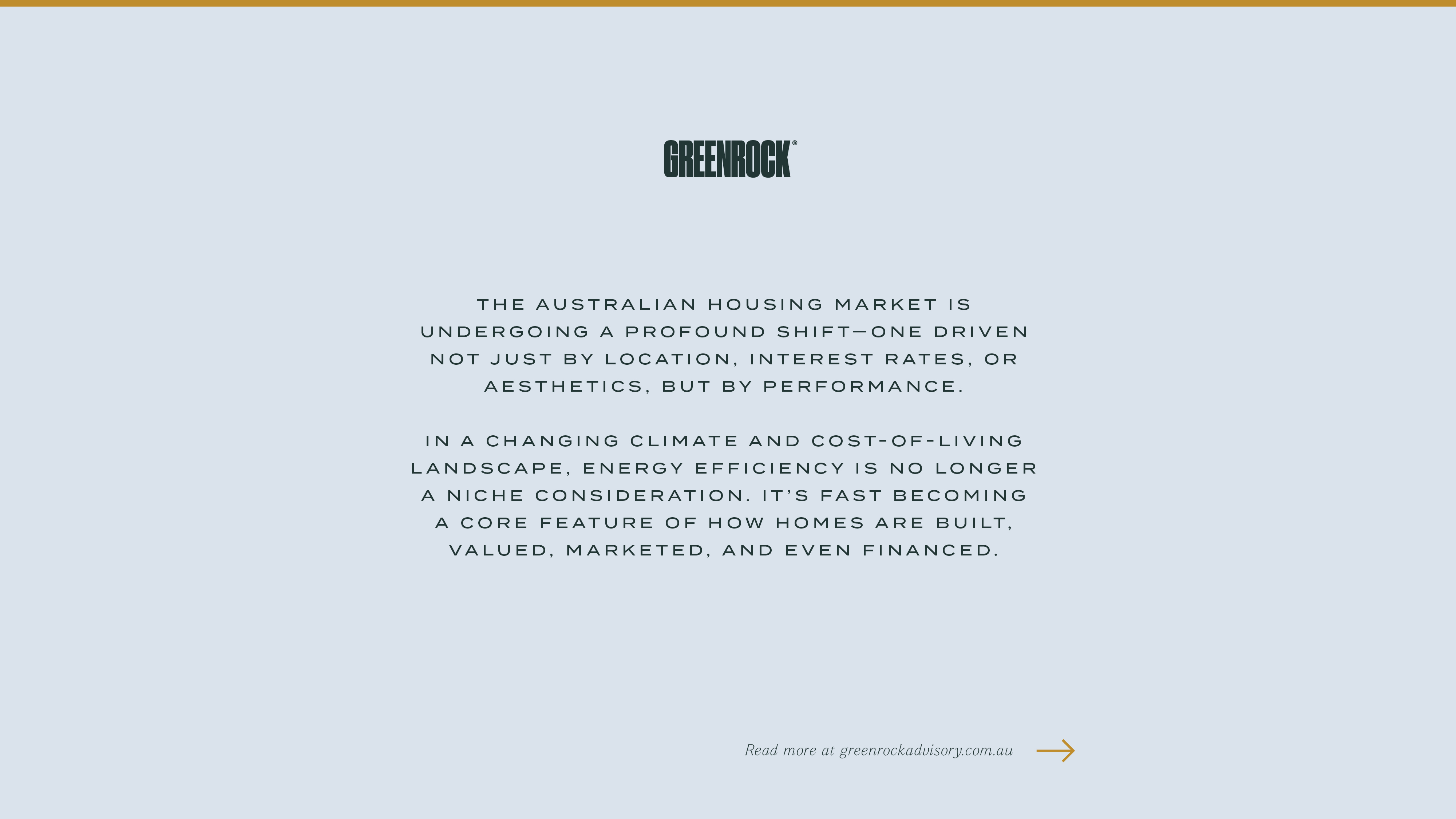FEATURED INSIGHTS
Our professional ecosystem streamlines your JOURNEY BY partnering with industry leaders.
The Australian housing market is undergoing a profound shift—one driven not just by location, interest rates, or aesthetics, but by performance.

The Australian housing market is undergoing a profound shift—one driven not just by location, interest rates, or aesthetics, but by performance.
In a changing climate and cost-of-living landscape, energy efficiency is no longer a niche consideration. It’s fast becoming a core feature of how homes are built, valued, marketed, and even financed.
Part of. Cotality’s new podcast series, “Beyond the buildings”, the panel explore, featuring Cecille Weldon and Tim Lawless, provides key insights into how energy efficiency is affecting Australian homes and how it will be a driving force into the future.
Reframing energy efficiency from “green” to practical
Historically, energy efficiency has been framed as a “green” or ethical consideration — a nice-to-have feature for environmentally minded buyers. But that is changing; energy efficiency now speaks directly to affordability, comfort, and resilience, especially as cost-of-living pressures mount.
Homes that are energy-efficient offer lower running costs and greater year-round comfort. Yet despite this, these features are still largely absent from listings and open-home conversations. This is a missed opportunity, especially given research showing that 89% of buyers and renters are more interested in homes when energy features are clearly identified.
For the industry, this represents a value proposition for the future. The ability to connect the dots between affordability pressures and practical solutions, and to position homes not just as places to live, but as tools to live better.
What buyers and renters really care about
While solar panels are often the poster child for sustainability, it’s the less visible features that often deliver the biggest benefits.
Several key inclusions are highlighted:
These features offer a tangible return in the form of reduced bills and increased comfort — and yet, many are still missing from marketing materials, sales scripts, and CRM systems.
Upcoming regulations are on the horizon
Governments across Australia are preparing to introduce mandatory energy disclosure at point of sale or lease, with New South Wales expected to lead the way. These ratings will function as property performance reports — guiding buyers not just on where a home stands now, but how it can be improved.
The features need to be embraced rather than feared. Ratings will help buyers and renters make informed decisions. More importantly, they will support long-term value growth by encouraging targeted upgrades and greater transparency.
The hidden divide
Tim Lawless, Head of research at Cotality, offers compelling data on the performance gap between newer and older homes. The key turning point came in 2010, when six-star energy ratings were mandated under the National Construction Code.
This stark difference highlights the legacy of poor standards in much of our existing housing stock — and it’s now showing up in buyer sentiment, lending criteria, and renovation demand.
Recent changes to the construction code have introduced seven-star minimums for new homes. But with only ~2% of homes built each year, this won't be enough to shift the broader market on its own.
Retrofitting
With over 11 million dwellings in Australia — and most built before modern standards — the greatest opportunity lies in retrofitting.
Governments are beginning to offer rebates and incentives for upgrades like insulation, double glazing, and efficient hot water systems. But beyond policy, it’s rising energy costs that are driving real behavioural change. Homeowners and investors are increasingly prioritising performance upgrades, not just for financial return but also for comfort and long-term resilience.
This shift will also flow through to renters. For property managers and landlords, retrofitting is not just about compliance — it’s about future-proofing their rent roll and improving tenant outcomes.
Property performance and the new language of value
Cecille Weldon describes this moment as the beginning of a “society of performance.” Rather than buyers asking about bedrooms, they’ll ask how the home performs: Is it liveable through summer heat? Is it expensive to run? Will it need costly upgrades?
This shift is especially relevant to the rental market. At present, renters often move into homes they think they can afford, only to be hit with unsustainable energy bills. This disconnect is eroding trust and increasing vulnerability, and it’s a problem that greater transparency can help solve.
Looking ahead, the quality of assets on a rent roll will become a defining metric. Agencies that track and improve property performance will lift the value of their portfolio, improve tenant retention, and stand out in a competitive market.
Summary
Both Weldon and Lawless make a clear case - upskilling on energy efficiency is no longer optional. It will affect how properties are sold, financed, insured, and valued.
Energy efficiency is not just about environmental impact. It’s about quality of life, liveability, and long-term value.
Reference: https://www.cotality.com/au/insights/articles/energy-efficiency-powers-property-value
Our professional ecosystem streamlines your JOURNEY BY partnering with industry leaders.

The Year To Invest - Are You Ready For 2025
14/1/25
Now is the perfect time to plan your next move

Commercial property Investing
1/8/24
Have you been considering investing in Commercial Property?

Addressing Australia's Housing Crisis through Sustainability and the Circular Economy
18/6/24
Copyright © 2023, All Rights Reserved. DESIGNED & Developed By ACMEmedia.com | Studionascent.com